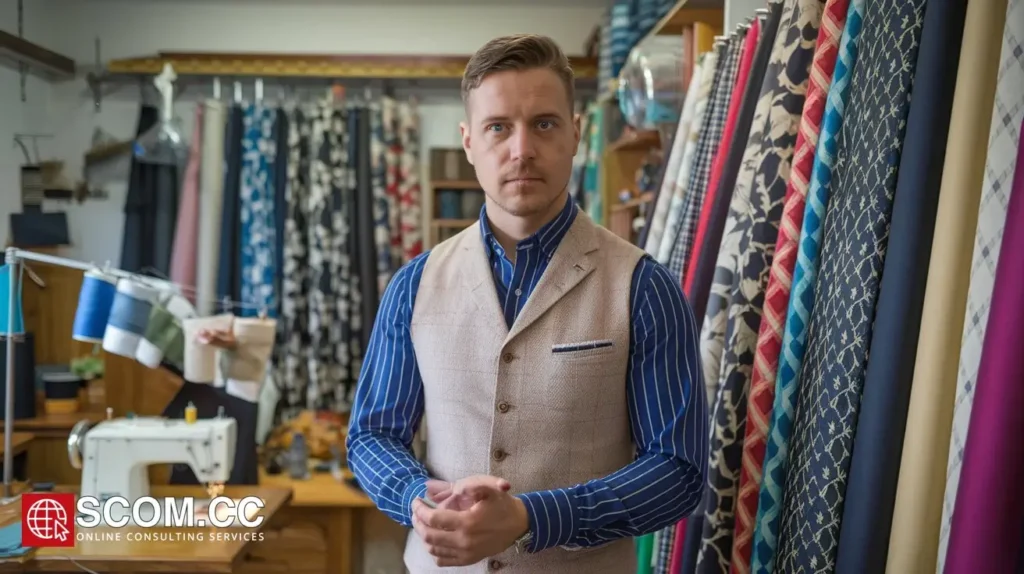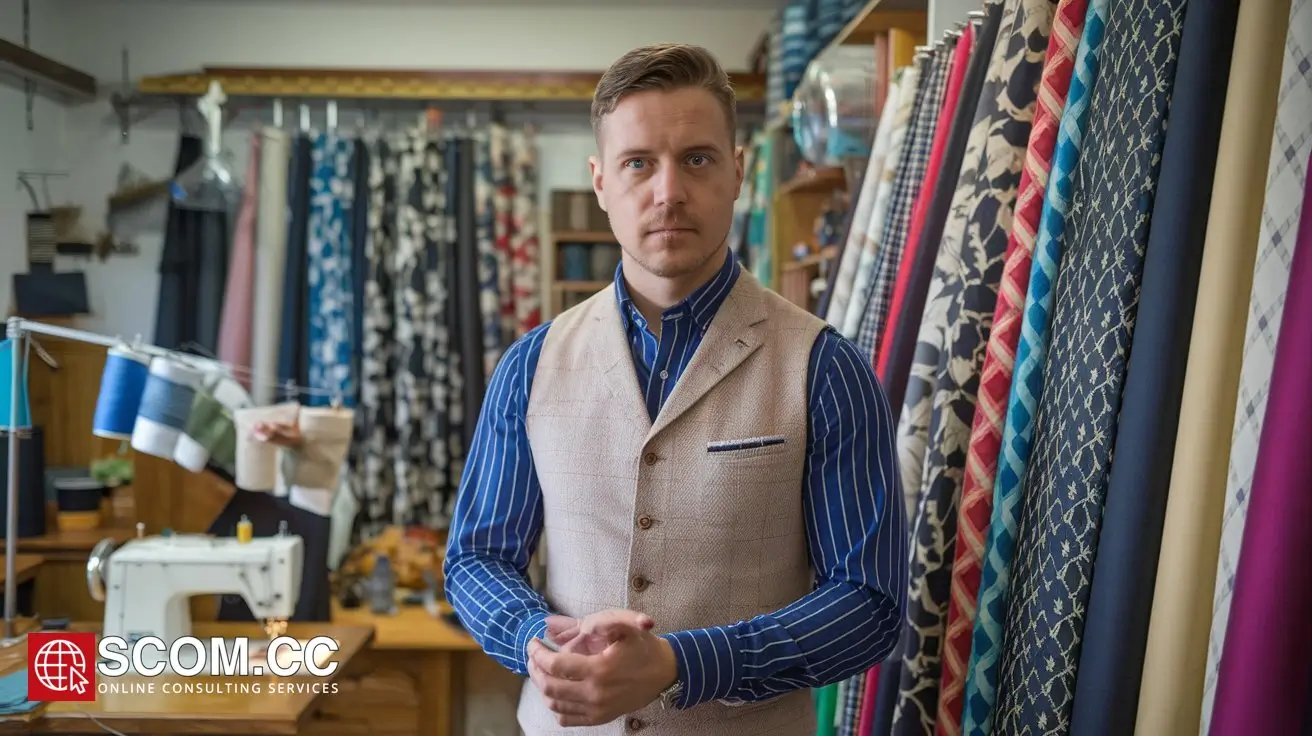What Are the Key Considerations When Designing a Signature Tailoring Collection?

- What Are the Key Considerations When Designing a Signature Tailoring Collection?
- Defining the Brand Identity
- Selecting Premium Fabrics and Materials
- Crafting Unique Designs
- Incorporating Trends and Timeless Elements
- Perfecting Fit and Construction
- Creating a Cohesive Collection
- Marketing and Launch Strategy
- Summary Table
-
FAQ
- 1. What is the first step in designing a signature tailoring collection?
- 2. How important are fabrics and materials in a tailoring collection?
- 3. What role do trends play in designing a tailoring collection?
- 4. How can I ensure that my tailoring collection stands out?
- 5. Why is fit and construction so important in tailoring?
- 6. What is the significance of a cohesive collection?
- 7. What strategies should be used for launching a tailoring collection?
- Conclusion
What Are the Key Considerations When Designing a Signature Tailoring Collection?
Designing a signature tailoring collection is a meticulous process that requires a deep understanding of both fashion principles and personal or brand identity. To create a collection that stands out and resonates with the target audience, designers must focus on several key considerations. These elements ensure the collection not only reflects the designer's vision but also meets market demands and sets a new standard in tailoring.
Defining the Brand Identity
Articulating a Unique Vision
The foundation of any signature collection is a clearly defined brand identity. This involves articulating a unique vision that differentiates the collection from others in the market. Consider the core values, aesthetics, and story behind the brand. Whether the focus is on classic sophistication, modern minimalism, or avant-garde innovation, this vision should guide all design decisions.
Target Audience Analysis
Understanding the target audience is crucial. Conduct thorough research to identify the demographics, preferences, and lifestyle of the potential customers. Tailor the collection to meet their needs and desires, ensuring that the designs resonate with their sense of style and fit seamlessly into their wardrobes.
Prioritizing Quality and Comfort
The choice of fabrics and materials is pivotal in creating a collection that exudes quality and comfort. Opt for premium materials such as wool, cashmere, silk, and linen. Each fabric should be selected not only for its aesthetic appeal but also for its durability and comfort. The drape, texture, and weight of the fabric should complement the overall design of the garments.
Innovative Material Use
Incorporate innovative materials to set the collection apart. Experiment with sustainable fabrics, tech-infused textiles, or custom blends that offer unique benefits. Innovations such as moisture-wicking fabrics or anti-wrinkle materials can enhance the functionality and appeal of the collection.
Crafting Unique Designs
Signature Silhouettes and Patterns
The design of the collection should feature signature silhouettes and patterns that reflect the brand’s identity. Whether it’s a classic tailored suit, a modern slim-fit design, or an exotic pattern, these elements should be distinctive and recognizable. Focus on creating well-defined cuts, structured shapes, and unique detailing that capture the essence of the brand.
Attention to Detail
Detailing is what elevates a design from ordinary to extraordinary. Pay close attention to stitching, buttons, linings, and collars. Incorporate unique embellishments or personal touches that enhance the overall aesthetic. The craftsmanship should be impeccable, ensuring that every element of the garment is executed with precision.
Incorporating Trends and Timeless Elements
Balancing Trend and Tradition
While a signature collection should be rooted in timeless elegance, incorporating current fashion trends can make it relevant and appealing. Striking a balance between classic tailoring and modern influences ensures the collection remains fresh and in demand. Stay updated with fashion shows, industry reports, and design magazines to keep the collection aligned with contemporary styles.
Creating Timeless Pieces
Design some pieces with a timeless appeal that transcends seasonal trends. Classic elements such as a well-tailored blazer, a crisp white shirt, or a neatly cut trouser should be part of the collection. These items offer versatility and long-lasting style, making them essential components of a signature collection.
Perfecting Fit and Construction
Emphasizing Fit and Tailoring
The fit of each garment is crucial in tailoring. Ensure that the designs include various fits—slim, regular, and relaxed—to cater to different body types and preferences. Work closely with skilled tailors to ensure each piece is meticulously crafted to achieve the perfect fit. Consider incorporating customization options to offer clients a more personalized experience.
High-Quality Construction
The construction of the garments should reflect high standards of craftsmanship. Invest in premium linings, reinforced stitching, and precision tailoring. High-quality construction enhances durability and ensures that each piece maintains its shape and structure over time.
Creating a Cohesive Collection
Ensuring Harmony and Versatility
A signature collection should be cohesive, with each piece complementing the others. Focus on creating a harmonious color palette, coordinated patterns, and versatile styles that allow for easy mix-and-match. This approach ensures that clients can build a wardrobe from the collection, where each item works well with the others.
Developing a Strong Narrative
A compelling narrative or theme can unify the collection and provide context for the designs. Whether it’s inspired by a specific era, cultural influence, or personal journey, the narrative should be woven into the designs and communicated through marketing materials. This storytelling aspect adds depth and meaning to the collection.
Marketing and Launch Strategy
Effective Marketing Campaigns
To successfully launch a signature collection, develop a comprehensive marketing strategy. Utilize various channels such as social media, fashion shows, and press releases to generate buzz. Collaborate with influencers and fashion editors to increase visibility and reach your target audience.
Strategic Launch Events
Plan a launch event that reflects the essence of the collection. Whether it’s an exclusive fashion show, a private viewing, or a virtual event, ensure it creates excitement and showcases the collection in its best light. This event serves as an opportunity to engage with potential clients and generate media coverage.
Summary Table
| Key Consideration | Description |
|---|---|
| Defining the Brand Identity | Articulate a unique vision and understand the target audience to guide design decisions. |
| Selecting Premium Fabrics | Choose high-quality materials like wool, cashmere, and silk; experiment with innovative fabrics. |
| Crafting Unique Designs | Develop signature silhouettes and details, focusing on unique patterns and meticulous detailing. |
| Incorporating Trends and Timeless Elements | Balance modern trends with timeless pieces to keep the collection relevant and classic. |
| Perfecting Fit and Construction | Ensure various fits and high-quality construction for durability and perfect fit. |
| Creating a Cohesive Collection | Ensure harmony among pieces with a unified color palette and theme. |
| Marketing and Launch Strategy | Develop effective marketing campaigns and plan a strategic launch event to generate excitement. |
FAQ
1. What is the first step in designing a signature tailoring collection?
The first step is to define the brand identity. This involves articulating a unique vision that differentiates the collection and understanding the target audience to guide all design decisions.
2. How important are fabrics and materials in a tailoring collection?
Fabrics and materials are crucial. Premium fabrics like wool, cashmere, and silk ensure quality and comfort, while innovative materials can set the collection apart and offer unique benefits.
3. What role do trends play in designing a tailoring collection?
Trends play a role in keeping the collection relevant. However, it’s important to balance current fashion trends with timeless elements to create pieces that are both fashionable and enduring.
4. How can I ensure that my tailoring collection stands out?
To ensure your collection stands out, focus on creating unique designs with signature silhouettes and details. Incorporate innovative elements and high-quality craftsmanship to differentiate your collection.
5. Why is fit and construction so important in tailoring?
Fit and construction are vital because they affect both the appearance and functionality of the garments. High-quality construction and precise fitting ensure durability and a refined look.
6. What is the significance of a cohesive collection?
A cohesive collection is important for harmonizing the individual pieces. It allows for easy mix-and-match, ensuring that all items work well together and fit into the overall brand narrative.
7. What strategies should be used for launching a tailoring collection?
Effective strategies include developing comprehensive marketing campaigns, leveraging social media, and planning a strategic launch event. Engaging with influencers and fashion editors can also boost visibility and excitement.
Conclusion
Designing a signature tailoring collection requires a careful balance of brand identity, premium materials, unique designs, and high-quality construction. By focusing on these key considerations, designers can create a collection that not only stands out but also meets the demands of a discerning clientele. Embrace innovation while staying true to classic principles to craft a collection that embodies both sophistication and relevance.

To explore more about tailoring, visit our Blog of Tailoring. If you have any questions or need assistance, go to our contact page. Additionally, you can find more information about tailoring and consulting at this tailoring and consulting portal.

Leave a Reply